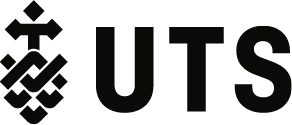As GenAI technology evolves and becomes increasingly critical to the workplace, strong connections between higher education and industry have never been more important. How can we ensure our students are equipped to meet the high expectations they face in a constantly transforming workplace? And what are employers expecting from graduates making the transition into their professional career? The Australian Technology Network of Universities explored these topics at the ATN National Symposium on GenAI Graduate Skills and Employability.
The changing face of recruitment
AI won’t replace you… but someone who uses AI better just might!
Dr Michelle Perugini
Dr Michelle Perugini is an entrepreneur and AI leader with deep expertise in healthcare. In her keynote presentation, she noted that AI isn’t the future – it’s here now, and the demand for AI proficiency will continue to increase. She explained how AI is being used to automate the early-stage hiring process. With resumes being screened for a shortlist well before a human sets eyes on them, candidates will need to know how to communicate effectively with AI-driven systems.
Many are now using GenAI to enhance their CV and build a cover letter. It can’t do all the thinking for you though – job-hunters will still need to stand out as an individual. Michelle suggested incorporating relevant keywords with clear and concise language, but making sure you fact-check and give it a personal touch. The aim is to hit that sweet spot in the AI-Human Venn diagram by leveraging AI while also mastering human skills.
She summarised that, to stand out, applicants should:
- Build a portfolio showcasing AI-enhanced projects
- Demonstrate problem-solving with AI in interviews
- Be adaptable – keep learning new AI tools
It’s not just knowing the tools…
A panel of employers shared their insights on GenAI adoption within their businesses, their expectation of graduate capabilities and using GenAI technology ethically. One of the panelists, Jane Adams (Commonwealth Bank of Australia), remarked that it was never more important for graduates to have critical thinking and problem-solving skills.
Amina Crooks from Accenture compared the crossover from university to the workplace to a renovation. You may bring your torch to guide the way with your foundational skills, but you are walking into an advanced infrastructure that requires electricity for all the lights to work. It goes beyond just knowing and using the existing tools. Entering a workplace with expectations on understanding and using GenAI takes creativity and resilience, not just the technical know-how.
Being human
A panel of members from accrediting and professional bodies, chaired by Prof Kylie Readman, gave further insight into what they’re seeking from potential employees.
Kelly Kajewski from Chartered Accountants Australia and NZ said that graduates will need to be across GenAI from Day 1, but should also apply their human capabilities and be adaptable due to the rate of change. Jonothon Woolfrey from the Australian HR Institute suggested that students should know the basics of how GenAI works for a better understanding of the risks and what the consequences may be.
Adam Awty (Law Institute of Victoria) wants to see students understanding the technology but also using their judgement when using it. AI has mostly been a lever to reduce transactional work in the legal profession. Caution is needed when using it in the context of advice as it’s important not to risk the trust that comes with client confidentiality.
Case studies
Educators from across ATN universities shared examples of how they are preparing graduates for the next step in their GenAI-engaged career. Six case studies were presented in a Pecha-Kutcha–inspired format.
- Curtin University students innovated with AI in the Health sector
- Deakin University delivered a multi-disciplinary FutureFocus GenAI Program
- RMIT University created a GenAI chatbot for an internal client
- The University of Newcastle built a Human-Centric AI-First framework
- Two graduates from University of South Australia reflected on GenAI guidance and judgement
- UTS showed the potential of AI as an accessibility feature through a Speech Pathology case study, which was also showcased at the Faculty of Health’s GenAI-ENHANCE Summit
“Be brave and explore” was how a couple of these university representatives summed up their final thoughts on GenAI in higher education. You can read their 6 case studies in detail here.
These examples show how being bold, brave and curious when it comes to GenAI will help us all innovate in this space together. This will aid in bridging the gap for students as they try to keep up with the fast evolution of tools and growing expectations in the workplace.
